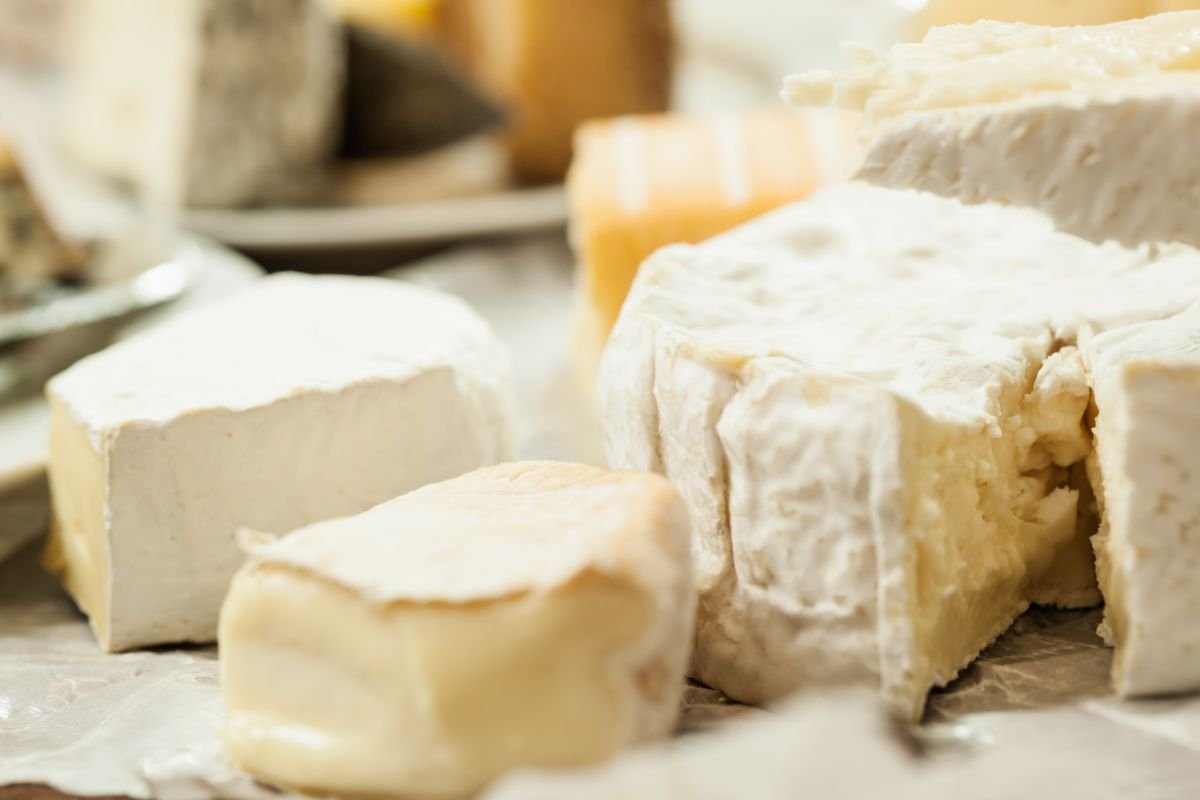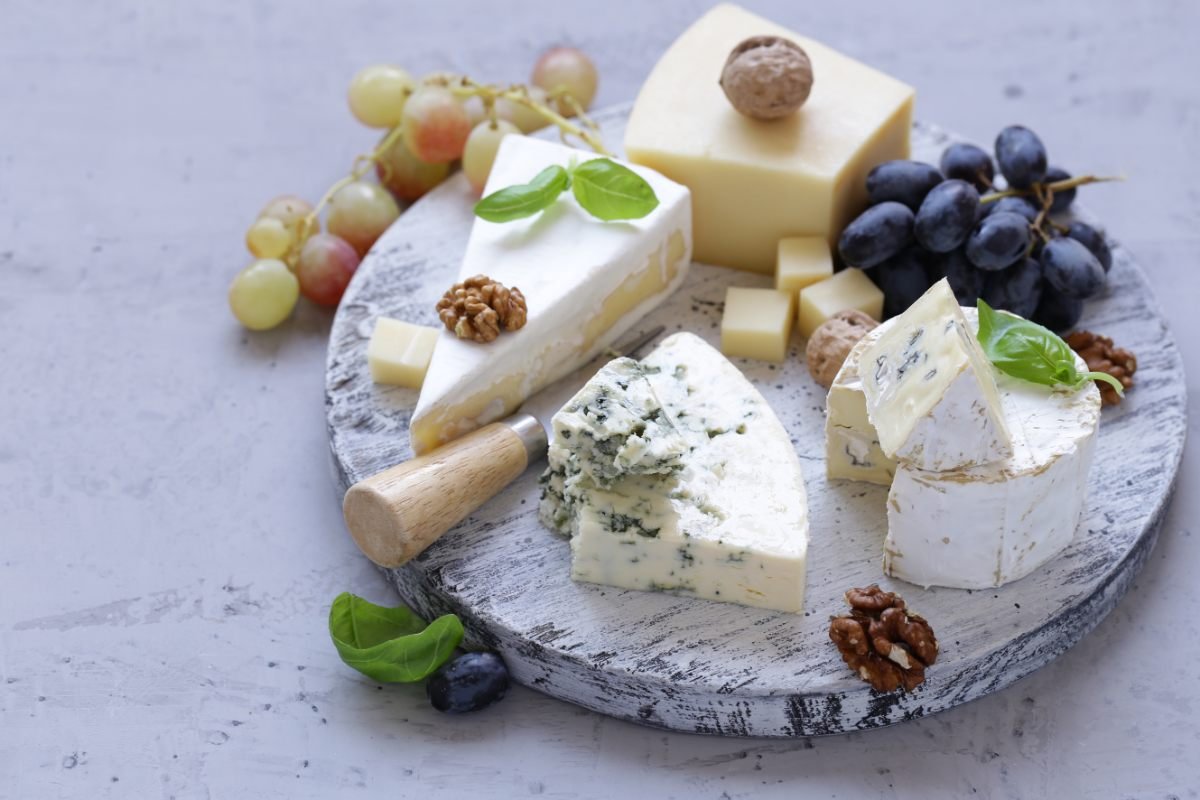Introduction to Soft Cheese
Soft cheese, with its rich textures and varied flavors, stands as a testament to the art and science of cheesemaking. This category encompasses cheeses that are often characterized by their high moisture content, creamy consistency, and a maturation process that is significantly shorter than that of hard cheeses. From the fresh, milky taste of Mozzarella to the earthy, complex flavors of Brie, soft cheeses offer a wide range of culinary possibilities.
The origins of soft cheese can be traced back thousands of years, making it one of the oldest forms of dairy consumption. Historical evidence suggests that the production of soft cheese began as an accident, likely the result of storing milk in containers made from the stomachs of animals, which contain rennet—a natural enzyme that curdles milk. This serendipitous discovery evolved into an art form practiced across various cultures, each developing its own unique types of soft cheese that reflect local tastes and traditions.
Soft cheese plays a crucial role in culinary traditions around the world. In Italy, for instance, soft cheeses like Ricotta and Mascarpone are staples in both savory dishes and desserts. Meanwhile, in France, cheeses such as Camembert and Brie are not only celebrated for their taste and texture but are also integral to the country’s culinary identity. Beyond their use in traditional recipes, soft cheeses are also revered for their ability to complement a wide array of ingredients, making them a favorite among chefs and home cooks alike.
The popularity of soft cheese is not just due to its versatility and taste but also its health benefits. Generally lower in fat than aged, hard cheeses, soft cheeses are a good source of proteins, vitamins, and minerals such as calcium and phosphorus. This nutritional profile, coupled with the probiotic properties found in some soft cheeses, makes them a valuable addition to a balanced diet.
As we delve deeper into the world of soft cheese, we uncover a culinary treasure that has captivated palates for centuries. Whether enjoyed on its own, spread on a piece of crusty bread, or melted into a comforting dish, soft cheese invites us to explore the rich tapestry of flavors and textures that it brings to the table.
Making Soft Cheese at Home

Embarking on the journey of making soft cheese at home is not just an endeavor in creating food; it’s an immersion into an ancient craft that brings a sense of accomplishment and a deeper appreciation for the complexities of cheesemaking. The allure of homemade soft cheese lies in its simplicity, the freshness of its taste, and the joy of customization.
Benefits of Homemade Cheese
Homemade cheese offers a plethora of advantages. Firstly, it ensures that you know exactly what goes into your cheese, allowing for a healthier, preservative-free product. Secondly, the homemade process provides the freedom to experiment with flavors, milk types, and techniques, creating a cheese that is uniquely yours. Lastly, making cheese at home can be surprisingly cost-effective, especially when producing in bulk.
Basic Equipment and Ingredients Needed
To start making soft cheese at home, you’ll need a few basic tools and ingredients:
- Equipment:
- A large stainless-steel pot for heating milk.
- A thermometer to monitor the milk’s temperature.
- Cheese cloth or a fine muslin for draining the curds.
- A slotted spoon for stirring and transferring curds.
- Cheese molds (optional) for shaping the cheese.
- Ingredients:
- High-quality milk is the cornerstone of good cheese. Fresh, whole cow’s milk is commonly used, but goat’s or sheep’s milk are excellent alternatives for different flavors and textures.
- A starter culture, which helps begin the fermentation process.
- Rennet, an enzyme that coagulates milk, forming curds and whey.
- Salt, for flavor and as a preservative.
Step-by-Step Guide to Making a Basic Soft Cheese
- Prepare the Milk: Pour your milk into the pot and slowly heat it to a specific temperature, often around 86°F (30°C), depending on the cheese type.
- Add the Starter Culture: Sprinkle the starter culture over the milk, let it rehydrate for a few minutes, then stir gently.
- Coagulate with Rennet: Add the rennet to the milk, mixing thoroughly but gently to ensure even distribution. Let the mixture sit undisturbed for the coagulation to occur, usually about an hour.
- Cut the Curd: Once a solid curd has formed, cut it into even cubes to help release the whey.
- Cook the Curd: Gently heat the curds while stirring, which further separates the curds from the whey.
- Drain the Curd: Transfer the curds to a cheesecloth-lined colander to drain. The draining time will affect the cheese’s final consistency.
- Salt and Shape: Season the curd with salt and transfer it to molds if desired. For some soft cheeses, this step concludes the process, while others might require pressing or ripening.
Tips for Success and Troubleshooting
- Milk Quality: Use the freshest milk available. Ultra-pasteurized milk should be avoided, as its high-heat treatment can affect the curdling process.
- Temperature Control: Keeping a close eye on temperature changes is crucial. Slight deviations can significantly impact the cheese’s texture.
- Patience: Cheese making is as much an art as it is a science. Some steps, like curdling and draining, require patience and gentle handling.
Making soft cheese at home invites an exploration of taste, texture, and tradition. While the process may seem daunting at first, the satisfaction of spreading your homemade cheese on a warm piece of bread is unparalleled.
Types of Soft Cheese

Soft cheese encompasses a world of textures, tastes, and traditions. Each variety tells a story of its origin, making technique, and culinary use. We’ll explore the most beloved types of soft cheese, categorizing them into fresh soft cheeses, soft ripened cheeses, and washed rind soft cheeses. Understanding these can enrich your dining experience and inspire new culinary creations.
Fresh Soft Cheeses
Mozzarella
One of the most popular cheeses worldwide, Mozzarella, originates from Italy. Artisans traditionally make it from water buffalo milk, but cow’s milk versions are also prevalent. Mozzarella stands out for its mild, slightly tangy flavor and elastic texture, making it a favorite for pizza, caprese salads, and sandwiches. To make Mozzarella at home, you heat the milk, add culture and rennet, and then stretch the curd until it reaches the desired consistency.
Ricotta
Ricotta, another Italian gem, is unique because it’s made from whey left over from other cheese productions, embodying a no-waste philosophy. It has a creamy texture and a slightly sweet taste, ideal for both savory dishes like lasagna and sweet desserts like cannoli. Homemade Ricotta involves reheating whey, adding an acid like vinegar to form curds, and then draining these curds until you achieve the perfect ricotta consistency.
Cottage Cheese
Cottage Cheese is a staple in health-conscious diets, valued for its high protein and low-fat content. Characterized by its mild flavor and small, moist curds, it’s often eaten with fruit, salads, or as a standalone snack. Making Cottage Cheese involves curdling milk with an acid, cutting the curd, cooking it gently, and then rinsing and draining to achieve its signature texture.
Soft Ripened Cheeses
Brie
Brie, the “Queen of Cheeses,” hails from France. It’s most noted for its creamy interior and edible white rind. The cheese achieves its characteristic flavor and texture through careful aging. While making Brie at home is more complex due to the aging process, enthusiasts can create similar soft-ripened cheeses by maintaining the right humidity and temperature conditions.
Camembert
Similar to Brie, Camembert is a French cheese with a slightly stronger flavor and firmer texture. It’s often enjoyed at room temperature to maximize its rich, buttery profile. Homemade Camembert requires meticulous attention to the aging process, ensuring the development of its distinctive rind and creamy core.
Washed Rind Soft Cheeses
Taleggio
Taleggio is an Italian cheese with a strong aroma but a surprisingly mild flavor. Its rind is washed with saltwater during aging, promoting the development of its unique taste and smell. For those attempting to recreate washed rind cheeses at home, regular washing of the cheese’s surface is crucial to encourage the growth of beneficial bacteria and molds.
Limburger
Famous for its pungent odor, Limburger’s flavor is much milder than its aroma suggests. This cheese is a testament to the saying, “Don’t judge a book by its cover.” Making Limburger at home involves a similar process to Taleggio, with regular washings to develop its characteristic rind and aroma.
Health Benefits and Nutritional Information
Soft cheeses are not only delicious but also offer various health benefits. They are typically rich in calcium, protein, and essential vitamins. Fresh soft cheeses, like Ricotta and Cottage Cheese, are particularly beneficial for those seeking high-protein, low-fat options. Meanwhile, the probiotics found in some soft ripened and washed rind cheeses can aid digestion and promote gut health.
Understanding the vast world of soft cheeses opens up endless culinary possibilities. Whether you’re enjoying a simple piece of Brie on a cracker or embarking on the adventure of making your own Mozzarella at home, soft cheeses offer a delightful exploration of flavor and texture.
Soft Cheese Recipes
Incorporating soft cheese into your cooking not only elevates the flavor profile of dishes but also introduces a delightful variety of textures. From creamy to gooey, the versatility of soft cheese makes it a star ingredient in numerous recipes. Below, we’ll explore three enticing recipes that showcase the charm of soft cheese in appetizers, main courses, and desserts.
Appetizer: Stuffed Mushrooms with Ricotta
Ingredients:
- 24 large mushrooms, stems removed
- 1 cup Ricotta cheese
- 1/4 cup grated Parmesan cheese
- 1 garlic clove, minced
- 2 tablespoons fresh parsley, chopped
- Salt and pepper to taste
- Olive oil for drizzling
Instructions:
- Preheat Oven: Start by heating your oven to 375°F (190°C). Arrange the mushroom caps on a baking sheet, cavity side up.
- Mix Filling: In a bowl, combine Ricotta cheese, Parmesan, minced garlic, and parsley. Season the mixture with salt and pepper to taste.
- Stuff Mushrooms: Spoon the cheese mixture into the mushroom caps, filling each one generously.
- Bake: Drizzle olive oil over the stuffed mushrooms. Bake in the preheated oven for 20-25 minutes, or until the mushrooms are tender and the tops are slightly golden.
- Serve Warm: Let the mushrooms cool for a few minutes before serving. They make a perfect appetizer that pairs wonderfully with a crisp white wine.
Main Course: Mozzarella and Tomato Basil Pasta
Ingredients:
- 8 ounces pasta (e.g., penne, spaghetti)
- 2 cups cherry tomatoes, halved
- 8 ounces fresh Mozzarella cheese, cubed
- 1/4 cup fresh basil leaves, torn
- 2 tablespoons olive oil
- 1 garlic clove, minced
- Salt and pepper to taste
- Red pepper flakes (optional)
Instructions:
- Cook Pasta: Boil the pasta in salted water according to package instructions until al dente. Drain and set aside.
- Sauté Tomatoes: In a large skillet, heat olive oil over medium heat. Add minced garlic and cherry tomatoes. Cook until the tomatoes are soft, about 5 minutes.
- Combine: Add the cooked pasta to the skillet with tomatoes. Toss to combine. Remove from heat.
- Add Mozzarella and Basil: While the pasta is still hot, add the Mozzarella cubes and torn basil leaves. Stir gently to combine. The heat from the pasta will slightly melt the Mozzarella.
- Season and Serve: Season with salt, pepper, and red pepper flakes to taste. Serve immediately, enjoying the creamy Mozzarella and the fresh burst of basil with every bite.
Dessert: Brie with Honey and Nuts
Ingredients:
- 1 wheel of Brie cheese (about 8 ounces)
- 3 tablespoons honey
- 1/4 cup mixed nuts (e.g., walnuts, almonds), chopped
- Fresh fruit for serving (e.g., apple slices, grapes)
Instructions:
- Preheat Oven: Heat your oven to 350°F (175°C).
- Prepare Brie: Place the Brie wheel on a baking sheet lined with parchment paper.
- Bake: Bake the Brie for about 10-15 minutes, or until it starts to soften and ooze slightly.
- Add Toppings: Remove the Brie from the oven and immediately drizzle with honey. Sprinkle the chopped nuts over the top.
- Serve with Fruit: Arrange fresh fruit around the Brie on a serving platter. Serve immediately, using a knife to spread the warm, gooey Brie on slices of fruit or crackers.
Conclusion
Embarking on a culinary journey with soft cheese reveals a world where textures melt, flavors blend, and dishes transform. From the simplicity of homemade cheese to the depth and richness of various soft cheese types, and through the delightful recipes we’ve explored, soft cheese proves to be a versatile and indispensable ingredient in the kitchen. Whether you’re crafting an appetizer, main course, or dessert, soft cheese adds a touch of gourmet to everyday meals.
We encourage you to continue experimenting with soft cheese in your cooking, discovering new flavors and combinations that delight your palate. For more inspiring recipes and culinary adventures with cheese and beyond, visit recipeszap.com. Dive into a collection of recipes designed to inspire chefs and home cooks alike, where tradition meets innovation in the kitchen. Let your culinary creativity flourish and share the joy of cooking with others.

